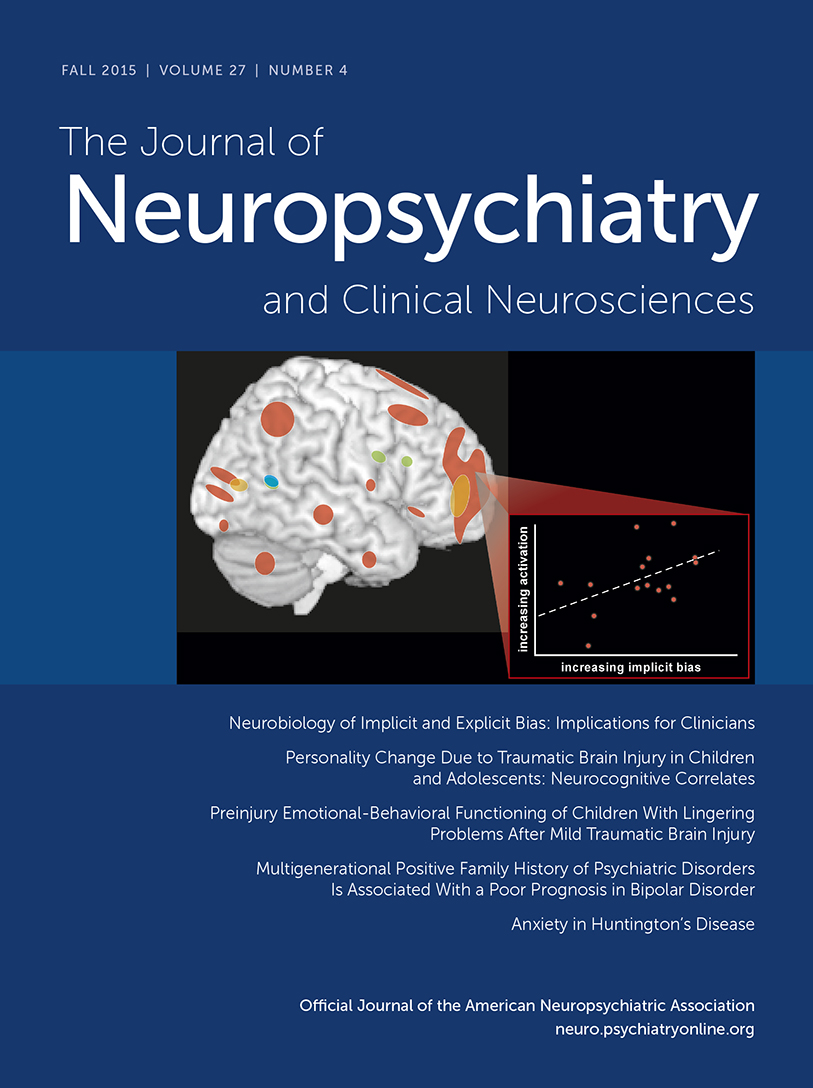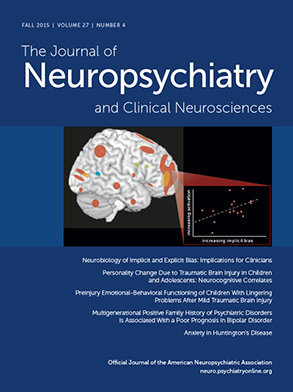Adjunctive Valproic Acid in Management-Refractory Hyperactive Delirium: A Case Series and Rationale
Abstract
Methods
Results
| Patient Number | Age/Sex | Presenting Medical Condition | Location | Delirium Etiology | Number of Delirium Days Prior to VPA | Psychotropic Medications Used Prior to VPA | Psychotropic Medications Used with VPA | Number of Days Until Delirium Resolutionb (Other Significant Outcomes) |
|---|---|---|---|---|---|---|---|---|
| 1 | 42/F | Status post heart transplantation, on corticosteroids, unable to extubate due to agitation on postoperative day 3 | ICU | Postoperative delirium, hypoxia,a hypokalemia,a steroids, opiates, benzodiazepines | 1 | CLN, DEX, FEN, MIDAZ, OLZ, PROP, SER | HAL | 2 (Extubated in 2 days) |
| 2 | 47/M | Status post ventricular assistive device placement, agitation, elevated QTc | ICU | Postoperative delirium, hypoxia,a infection,a benzodiazepines, opiates | 11 | CLN, DEX, HYDRM, PROP | ARIP, doxepine | 3 |
| 3 | 53/M | Status post aortic dissection, agitation | ICU | Postoperative delirium, acute kidney injury, infection,a methamphetamine withdrawal, opiates | 3 | DEX, FEN, PROP | CLO, HAL | 3 (Extubated in 3 days) |
| 4 | 46/F | Cardiomyopathy with ongoing anxiety, delirium, agitation | CCU | Acute kidney injury,a benzodiazepines, opiates | 3 | HAL, LOR | HAL | 2 (Underwent successful VAD implantation) |
| 5 | 25/M | Pontine hemorrhage, ongoing agitation, insomnia after surgery, akathisia on HAL | Floor | Intracranial pathology, infection,a steroids,a benzodiazepines | 5 | HAL, LOR, SER | OLZ | 2 |
| 6 | 49/M | Severe ischemic cardiomyopathy, on inotropes | ICU | Cardiogenic shock,a hyponatremia,a infection,a benzodiazepines | 17 | DEX, DIAZ, FEN, LOR, MIDAZ, PROP | GAB, HAL, guanfacine | 11 (Mental status improved significantly in 3 days) |
| 7 | 87/M | Stroke, dementia, rhabdomyolysis, elevated QTc | Floor | Intracranial pathology, rhabdomyolysis, acute kidney injurya | 8 | HAL, QUE, RIS | Ramelteon | 2 |
| 8 | 27/M | Pancreatitis, sepsis, agitation | ICU | Pancreatitis,a infection,a acute kidney injury,a alcohol withdrawal, opiates, benzodiazepines | 3 | DEX, HAL, HYDRM, MIDAZ, PROP | CLO, GAB, HAL | 1 (Mental status clear in 2 days, discharged home in 5 days) |
| 9 | 46/M | TBI, pneumonia, impulsivity, elevated QTc | Floor | Intracranial pathology, infection,a opiatesa | 9 | DEX, morphine, PROP | None | 4 (Discharged to rehabilitation clinic in 5 days) |
| 10 | 58/M | Aortic dissection, stroke, seizure, agitation, combative attitude | ICU | Intracranial pathology, postoperative delirium, seizurea | 3 | DEX, HAL, HYDRM | CLO, HAL | 1 (Transferred out of ICU in 2 days) |
| 11 | 46/M | Intracranial hemorrhage, status post evacuation, septic, agitation, elevated QTc on HAL | ICU → floor | Intracranial pathology, postoperative delirium, methamphetamine withdrawal, benzodiazepines | 6 | CLO, DEX, FEN, HAL, LOR, PROP | CLO, HAL | 30 (Stabilized; discharged home in 2 months) |
| 12 | 47/M | Status post lung transplantation; on corticosteroids, drips, MER, OLZ, and benzodiazepines; consulted postoperative day 2 | ICU | Postoperative delirium, hypoxia, infection,a steroids, benzodiazepines, opiates | 7 | CLN, DEX, HYDRM, OLZ, PROP | HAL | 11 (Mental status improved within a few days; gastrointestinal bleed on and off VPA) |
| 13 | 66/M | Myasthenia gravis, septic shock, on MER, intubated, agitation | ICU | Infection, septic shock,a hypotension,a hypoxia,a acute kidney injury,a hyperkalemia,a steroids | 5 | DEX, HAL, PROP | HAL, MRZ | 9 (MER discontinued on day 5 of coadministration with VPA; VPA level became therapeutic and delirium improved within 4 days) |
| 14 | 66/M | Patient re-hospitalized shortly after discharge; Myasthenia gravis, pneumonia, sepsis, renal failure, on MER | ICU | Infection,a uremia | 2 | MRZ, RIS | HAL → QUE; MRZ | NR (agitation improved but remained delirious; able to transfer out of ICU and transferred to comfort care) |
| 15 | 51/M | Diabetic ketoacidosis, acute renal failure, sepsis | ICU | Diabetic ketoacidosis, infection,a uremia, acidosis,a AKI, hyponatremiaa | 2 | DEX, HAL | CLO, HAL | NR (agitation improved but remained delirious; transitioned to comfort care) |
| 16 | 73/M | Osler-Weber Rendu syndrome, AICD, massive epistaxis | ICU | Hypoxia,a hypotensiona | 3 | ARIP, DEX, HYDRM, MIRT | ARP, MRZ | NR (agitation improved but remained delirious; extubated, transitioned to comfort care) |
Discussion
Conclusions
References
Information & Authors
Information
Published In
History
Authors
Competing Interests
Metrics & Citations
Metrics
Citations
Export Citations
If you have the appropriate software installed, you can download article citation data to the citation manager of your choice. Simply select your manager software from the list below and click Download.
For more information or tips please see 'Downloading to a citation manager' in the Help menu.
View Options
View options
PDF/EPUB
View PDF/EPUBLogin options
Already a subscriber? Access your subscription through your login credentials or your institution for full access to this article.
Personal login Institutional Login Open Athens loginNot a subscriber?
PsychiatryOnline subscription options offer access to the DSM-5-TR® library, books, journals, CME, and patient resources. This all-in-one virtual library provides psychiatrists and mental health professionals with key resources for diagnosis, treatment, research, and professional development.
Need more help? PsychiatryOnline Customer Service may be reached by emailing [email protected] or by calling 800-368-5777 (in the U.S.) or 703-907-7322 (outside the U.S.).

